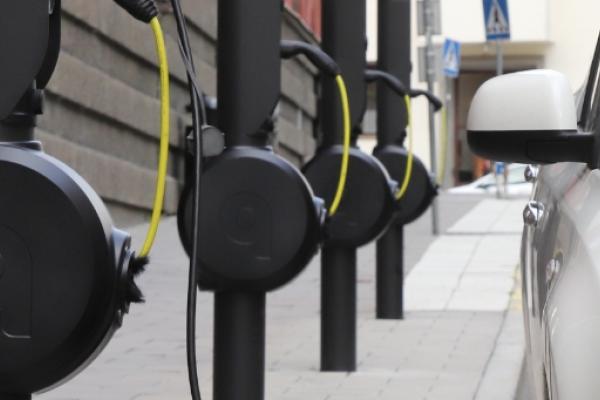
Part of EAFO’s Series on EV Market Trends Across Europe
🔔 Subscribe to our newsletter for the latest updates: Subscribe here
📢 Follow us on LinkedIn for more insights: EAFO LinkedIn
Sweden’s electric vehicle (EV) market in 2024 mirrored the broader trends of the European automotive industry. Marked by economic uncertainty and policy gaps, the year saw a slowdown in EV adoption and a rebound in emissions from new passenger cars. However, early indications for 2025 suggest renewed momentum as economic and policy conditions evolve.
2024: A Challenging Year for the Swedish Automotive Market
- Passenger Cars:
- 269,498 new registrations, a 7% decline YoY.
- BEVs accounted for 94,332 units (-15.9%), representing 35% of total registrations.
- PHEVs showed resilience, growing by 3.3% YoY to 63,087 units, with a market share of 23.4%.
- Light Trucks:
- Registrations fell to 38,318 units (-12.3%), with 22.1% being BEV, a slight increase from 2023.
- Heavy Trucks:
- Registrations dropped 21% YoY to 5,230 units, but BEV models increased their share to 6.5% from 4.3%.
- Buses:
- Registrations plummeted 30% YoY to 783 units, with BEV buses accounting for 32% of the market, up from 28%.

December 2024: A Slow Finish
The month of December encapsulated the challenges of 2024, with all vehicle categories posting declines:
- Passenger Cars: 26,237 units (-10.9% YoY). BEVs comprised 40.8%, with PHEVs adding 22% to bring the total plug-in share to 62.8%.
- Light Trucks: 3,618 units (-26.3% YoY), with 21.3% being electric.
- Heavy Trucks: 393 units (-19.8% YoY), with electric models increasing their share to 6.3%.
- Buses: 139 units (-24.9%), with 71.2% being electric, demonstrating significant progress in this segment.

Impact on Emissions
For the first time in years, the trend of reducing emissions from new passenger cars was reversed:
- Average CO₂ emissions increased from 61 g/km in 2023 to 64 g/km in 2024.
This uptick was attributed to the slowdown in BEV growth and an overall drop in new vehicle sales.
Outlook for 2025: Hope on the Horizon
Mobility Sweden forecasts a slight recovery in 2025:
- Passenger Cars: 275,000 new registrations, with BEVs expected to grow to 40% of the market, driven by new model launches and expected interest rate cuts.
- Light Trucks: 40,000 registrations, with the share of electric vehicles rising to 25%.
While the economic downturn weighed heavily on the market in 2024, measures such as reduced electricity tax for vehicle charging and incentives for fossil-free transport are seen as vital for reigniting growth.
Policy expectations for 2025
While direct purchase incentives for electric cars remain absent in Sweden, the BEV market in 2025 will be shaped by a combination of factors. The increased focus on charging infrastructure, the "climate premium" for electric commercial vehicles, new EU emission regulations, and the potential for new government incentives are all expected to contribute to the continued growth of the BEV sector in Sweden. Additionally, industry experts anticipate a renewed focus on government incentives to stimulate EV sales growth in 2025 . These could include measures such as tax breaks for home charging installations, subsidies for businesses transitioning to electric fleets, or reduced electricity taxes specifically for EV charging. Despite the challenges, the future of electric mobility in Sweden appears promising, driven by a combination of policy influences and a growing awareness of the benefits of sustainable transportation.
Key Takeaways
- Economic Challenges: Recession and high interest rates slowed EV adoption, especially in the private market.
- Policy Gaps: Stronger policy instruments are needed to accelerate electrification, particularly for heavy trucks and light vehicles.
- Momentum in Buses: Electric buses demonstrated a significant increase in market share, highlighting potential for growth with further infrastructure support.
Stay tuned for the next installment of EAFO’s market series, as we continue to explore the state of EV adoption across Europe’s largest markets.
Sources:
Views and opinions expressed are those of the author(s) and do not reflect those of the European Commission.



